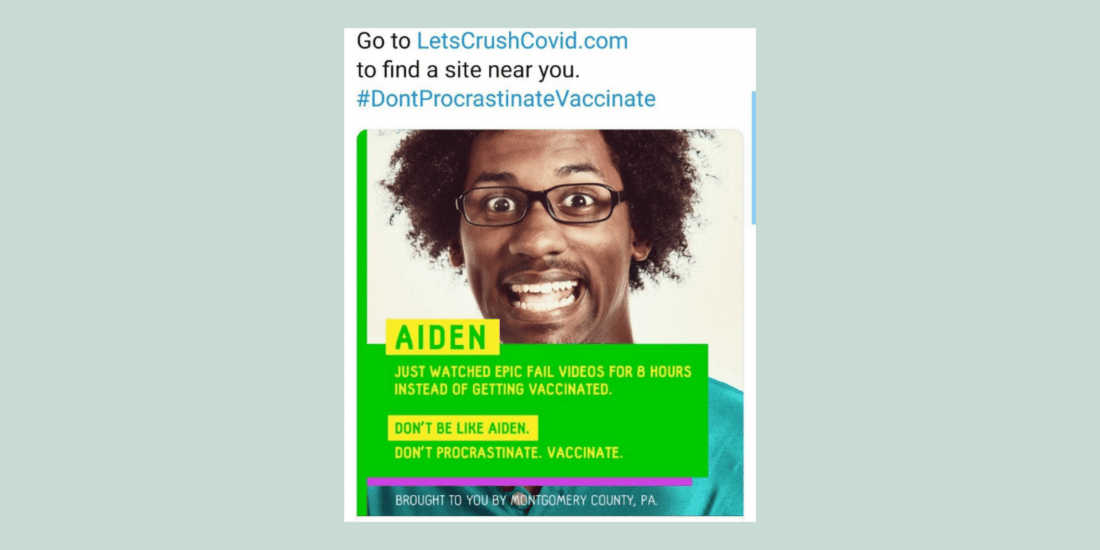
Why Shame Marketing Approaches Are Not Effective
Our present moment is one of rapid change—at times, it can even seem hard to keep track of the great strides towards equality, inclusion, and diversity across so many industries. It finally seems like we’re painting on a canvas with all the right colors.
With so much of this conversation happening in marketing and advertising, specifically, you’d imagine that some of the industries’ old standby tactics—criticism, shame, othering, etc.—would have fallen by the wayside. So why does it sometimes feel like we’re still operating from the mentality of an elementary school playground? Talking about sharing and being friends when everything is fine, but immediately taking sides when a chalk line is drawn on the blacktop.
How did we get here?
Appealing to audiences by creating opposing sides is nothing new to the world of marketing. In 1921, George Lambert (the son of Listerine’s founder Jordan Lambert) pieced together “halitosis” as a medical sounding term for bad-smelling breath and offered the exclusive solution. Mouthwash‘s popularity skyrocketed from that first shame-based campaign. Though most in our modern-day world would support marketing for good oral hygiene, the tactic was initially effective because it (re-)defined what people should consider “bad”—bad breath—and what they should consider “good”—minty freshness. When presented with the options between good or bad, wouldn’t you choose good? But there’s a dangerous implication at play here—creating these scenarios doesn’t actually elevate those who are doing the “good” thing, at least not for long. But it DOES heap shame onto anyone who already isn’t.
It’s 2021 now. The world is different. We know better. Or do we?
Examples
We hear a lot of talk about how empathy should be the North Star in conversations with our audiences, regardless of topic or industry. Many brands, organizations, and thought leaders have embraced it well. But it still seems as though the opposite of empathy—which according to Brene Brown, is shame—is still alive and kicking. Rather than showing your audience you understand them, employing shame as a motivation tactic says that you think you’re better than them. Implementing shame is a directionally challenged approach: you wind up losing your message down the shame spiral, however well-meaning you think that message might be, while inadvertently offending your intended audience in the fall.
While we don’t run across instances of this often, the fact that it still exists at all is troubling—especially in health marketing, where empathy and compassion really should be the top priority. But when we saw the ads below, not only did they stop us in our tracks, but sparked a high-energy conversation around the ads’ intention and execution. Take a minute to absorb them for yourself. Make sure to let each aftertaste sit for a moment.
Ad #1 – Jared
I see this as cringe stereotype imaging while insulting someone’s chosen hobby. Convincing.

Ad #2 – Madison
All I gather is an untimely choice to belittle animal lovers for loving their animals during a pandemic– where animal adoption skyrocketed.
Ad #3 – Aiden
I feel insulted on his behalf– judging a pastime that brings someone joy. (And clearly written by someone who sees themselves above an app enjoyed by over a billion people)
The phrase that comes to mind for me here is “At least you’re not Becky.” Just notice the tone when you read that out loud. Condescension. Othering. Shame. One simple sentence conveys that you’re better off because Becky isn’t. In the case of these ads, the narrative told is “How dreadful, horrible, shameful it would be to be Aiden. Or Madison. Or Jared.” It’s hard to understand how a superiority play is intended to encourage someone to WANT to get the vaccine, especially when they’re likely in the same demographic they’re making fun of.
Marketing via personal device platforms means that power is in the hands of the consumer.
They have the power to scroll right on by that “cat-loving shame” ad that throws shade their way. The very generation that these ads are trying to reach won’t put up with these antics. Savvy with tech, bombarded with ads, and unabashedly speaking their minds, shame tactics are as effective as pen on glass and an insult to their choice of identity.
How we can combat shame marketing
So how could they have done this differently, using empathy rather than shame? We decided to take matters into our own hands, and flip the script ourselves:
 Brene Brown says it best: “We live in a world where most people still subscribe to the belief that shame is a good tool for keeping people in line. Not only is this wrong, but it’s dangerous.”
Brene Brown says it best: “We live in a world where most people still subscribe to the belief that shame is a good tool for keeping people in line. Not only is this wrong, but it’s dangerous.”
The use of shame, fear, and guilt is a cop-out, and a genuine marketing fail. It may feel “satisfying” to be snarky, but using insults doesn’t show that you understand your audience—it highlights the fact that you don’t actually know them at all. You’re not empathizing and offering solutions or support to your customer– you’re herding. Loud voices, insults, condescension simply is unacceptable behavior. Now is the time to lean into advertising ethics. If you ever find yourself tempted to take the easy way out of a tricky marketing situation by implementing shame tactics instead of leading with empathy, remember Michelle Obama’s famous quote: “When they go low, we go high.”
By embracing a view of empathy and compassion towards those on the community playground–we find those chalk lines are a little more negotiable. When we’re willing to step off that box of superiority and actually get their toes in the sandbox, we can stop arguing over shovels and sides and start building sandcastles together.
Are you ready to create positive and impactful marketing strategies? Contact a member of our team to get started.

